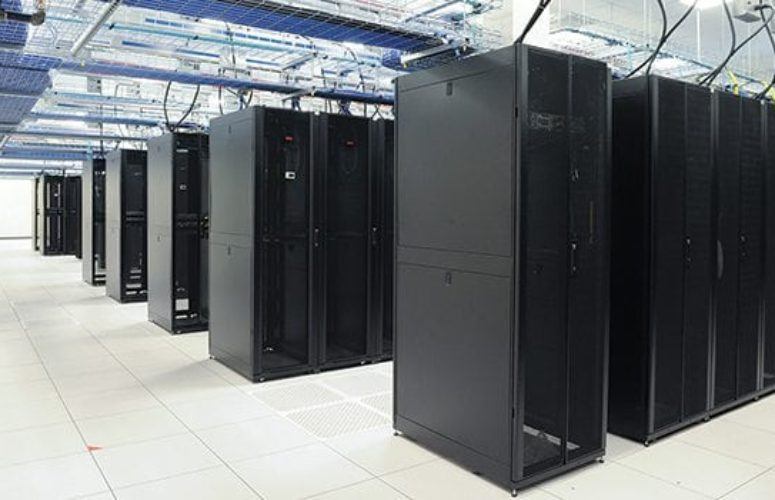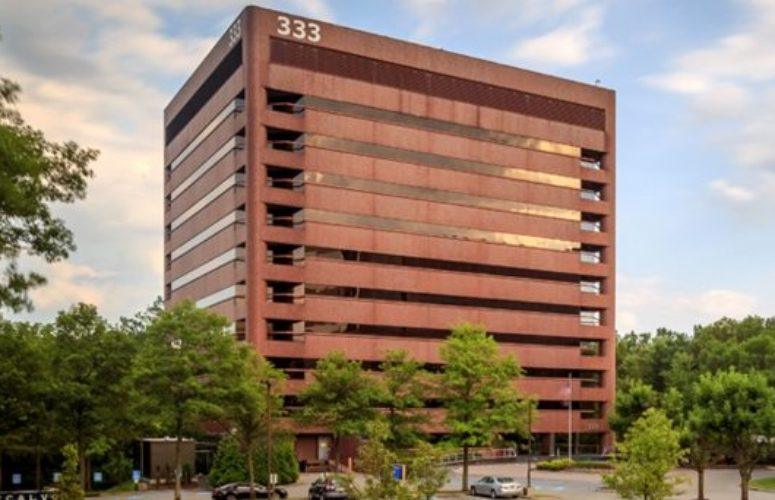
Data Center Demand and Innovations Get New Jersey Back on Online
By Lorna Pappas, Contributing Writer On Jun 26, 2017Nearly any business can find benefits to outsourcing its mission critical data to a third-party data center infrastructure management (DCIM) solution – including better utility rates; 24/7 uptime agreements; offloaded site real estate; operational vs. capital expense; quick disaster recovery; and moving back from data maintenance to a company’s core competency.
In fact, in its 2016 Magic Quadrant for Data Center Infrastructure Management Tools, Gartner Inc. goes as far as to say, “All organizations with at least a moderate-size data center should consider investing in a DCIM tool, especially if they have a cost optimization initiative or are planning any significant data center changes.”
In Jones Lang LaSalle IP’s most recent “Data Center Outlook” report, the company states, “The data center industry is experiencing a host of new change drivers, all while it continues to explode with vigorous growth. We’re observing companies getting smarter about their data center and data usage strategies, thriving amidst these winds of change.”
New Jersey Market Ranks Fifth in Nation
Interestingly, New Jersey ranks among the top five US markets (it is 5th) in terms of DCIM megawatts and facilities used, even though Superstorm Sandy’s infrastructure devastation moved us down a few notches. Since then, our market has lagged in terms of opportunity, exacerbated by the lack of tax rebate and power incentives, and available capacity. But our dense enterprise population; proximity to financial and other data-intensive businesses in New York City, where power can cost almost three times more; and concentration of a highly-trained technical data center staff have worked to our advantage.
“It’s a great time to outsource data usage in New Jersey, with lots of opportunity in the marketplace,” states Sean Brady, managing director of Cushman & Wakefield of New Jersey, Inc.’s Tenant Advisory Group and co-founder of its Global Data Center Advisory Group. “There’s a flurry of consolidation activity. If you need to move to or expand in this area, it’s a great time to negotiate a deal.”
Here’s how data center demand in New Jersey broke down by industry during 2016, according to the JLL report:
- 45 percent banking and financial services
- 20 percent healthcare
- 15 percent retail and e-commerce
- 15 percent technology
- 5 percent entertainment and media
Cyrus One, Structure Tone and vXchnge actively support these industries’ data needs in New Jersey. For this article, each joined Cushman & Wakefield in reporting recent activities, advice and leading innovations that will continue to elevate data center usage in the New Jersey market.
Advice from Structure Tone
Structure Tone of Woodbridge is a construction management and general contracting services provider with a specialty in mission critical facilities such as data centers. The company has managed important data center construction projects for Princeton University, Mayo Clinic, Yahoo!, Microsoft and Morgan Stanley, among others.
Terence Deneny, vice president and director of Structure Tone’s mission critical division, confirms that while New Jersey has been a leader in the data center market, it now lags behind Northern Virginia (No. 1), Silicon Valley (No. 2), Dallas (No. 3) and Chicago (No. 4). “The cost of construction and shortage of data center tax rebates in New Jersey are among the factors hindering the amount of megawatts and facilities being brought online here,” he reports. “But we are starting to see an uptick in businesses that sell IT space. Larger DCIMs are acquiring smaller ones, with a keen eye on being very energy efficient.”
He advises his clients to consider the age of a data center facility, since newer ones are more efficient, demanding less energy. “We also advise potential tenants to negotiate the proper service level agreement [SLA]. For example, if the client needs to be up and running 24x7x365, the SLA must clearly outline that the provider agrees to the same terms and conditions. It’s also important to be sure the facility is close to the telecommunications lines the tenant will use, to be assured you can connect quickly and clearly.”
Deneny notes that data centers pushing heavily to be more energy efficient are fueling lots of trends in power and cooling such as new water systems, outside air and other cooling methods that take the load off mechanical cooling systems.
“I hold a very optimistic view of the New Jersey market for the next two to three years,” Deneny says. “As capacity is absorbed, we believe colocation companies will start to look at building additional facilities.”
CyrusOne Buys Somerset DCIM
Among the newest and higher-profile DCIM transactions around the state, CyrusOne, a global data center REIT, announced in February 2017 it was purchasing an enterprise-class data center in Somerset from Sentinel Data Centers. The 430,000-square-foot location, which CyrusOne is expanding, sits on 22.5 acres in Somerset and is home to many leading financial services, healthcare, energy and technology companies. CyrusOne already owns a similar, 200,000-square-foot, mission-critical data center in Totowa, which has limited expansion capabilities.
The Somerset facility’s infrastructure design “lets us separate space and power, allowing us to right-size customers and provide customer options for increasing density or footprint,” says John Hatem, executive vice president of design, construction and operations for CyrusOne. “Customers are not required to over commit to power utilization based on future growth: They are given the opportunity to commit initially to only what is needed with the ability to increase their requirement if/when it becomes necessary.”
Flexible Service Levels
Hatem sees a strong trend towards more flexibility in DCIM service levels for critical equipment. He notes that customers are beginning to separate highly critical equipment from less critical equipment even inside of the same data center footprint.
“Highly critical equipment generally mandates a higher uptime requirement, thus necessitating a more robust and redundant infrastructure to mitigate potential interruptions of service to such equipment,” he explains. “Less critical equipment may require less robust support infrastructure thereby reducing initial cost and operations cost. The flexibility in being able to provide solutions that support the different levels of criticality of customer equipment provides the customer with a better fit for their individual deployment of equipment.”
Innovative Water Treatment Systems
Hatem also sees New Jersey’s data centers innovating in terms of water treatment systems used to cut the costs of cooling IT equipment. He points to the Water Conservation Technology International’s Zero Blowdown condenser water treatment system, which “eliminates corrosion inhibitor and biological treatment chemicals as well as blow down water wastage and its associated cost,” he reveals. “This innovation significantly minimizes overall water consumption – estimated at 25.6 million gallons over the first five years of implementation – and is suitable for any water source; ground water, recycled/industrial water, city water, etc. It eliminates scale formation potentials from variations in source water and provides corrosion protection for mild steel, copper, galvanized and aluminum as well as exceptional pathogen and bio growth inhibition.”
Security and Compliance
vXchnge is a leading colocation services provider with a 48,000-square-foot data center in Secaucus, and also serves 14 other markets nationwide. Ernest Sampera, chief marketing officer for vXchnge, offers this advice for companies looking to engage a data center. “First, reevaluate your core competencies,” he asserts. “What is our core business? Should we continue to invest in our own data center? What would it take for the next 5 to 10 years to future-proof it for power, cooling and security?”
Security and compliance are very important. “Ensure the data center you’re considering has the physical and logical security to protect your data asset,” he states. “In addition to 24x7x365 physical security monitoring, biometric or key card access controls systems and video surveillance retention, also look for compliance with various standards that govern internal controls.” These include SSAE 16 Type II, SOC 2 Type II, ISO/IEC 27001:2013, HIPAA/HITECH and PCI DSS 3.1, to name a few.
“We see enterprise customers looking for more incremental value-add services in their DCIMs,” Sampera says. “They want to see records of all their deployments, including power, network utilization, audit logs, number of cabinets [a standard unit of measurement] – everything they used to have in their domain of control they need to see in terms of information and reporting. Not all providers deliver this level of detail.”
These details include the identity and control of everyone coming into and out of the data cabinet. In that regard, “biometrics isn’t new, but voice recognition is and we’re testing that capability right now,” Sampera discloses.
He advises companies to decide on a DCIM decision based on the right, succinct criteria, which are reliability, serviceability, site infrastructure and security, which needs to tie to corporation compliance.
Best Approach
Brady – who has 36 years of experience as a real estate broker, 20 of those focused on data centers specifically – says a potential DCIM tenant should retain an attorney who is well-versed in data center design and complexities. In fact, “that attorney should have completed at least 20 of the same-type transactions a tenant is now considering.”
He also recommends that the attorney be joined by an IT and network consultant engineer; general contractor on the bigger deals; decommissioning agent; migration consultation and mover; and data center real estate broker. “Most deals do not use this formula,” Brady states, “but this is the best approach to finding the best third-party data center solution for the user.”
Data center capabilities and tenant requirements and priorities differ greatly, so every transaction should be a customized one. He adds, “Luckily, customization creates novel solutions and added value designed to serve the tenant’s long-term interests, and that is happening in New Jersey.”
Related Articles:






